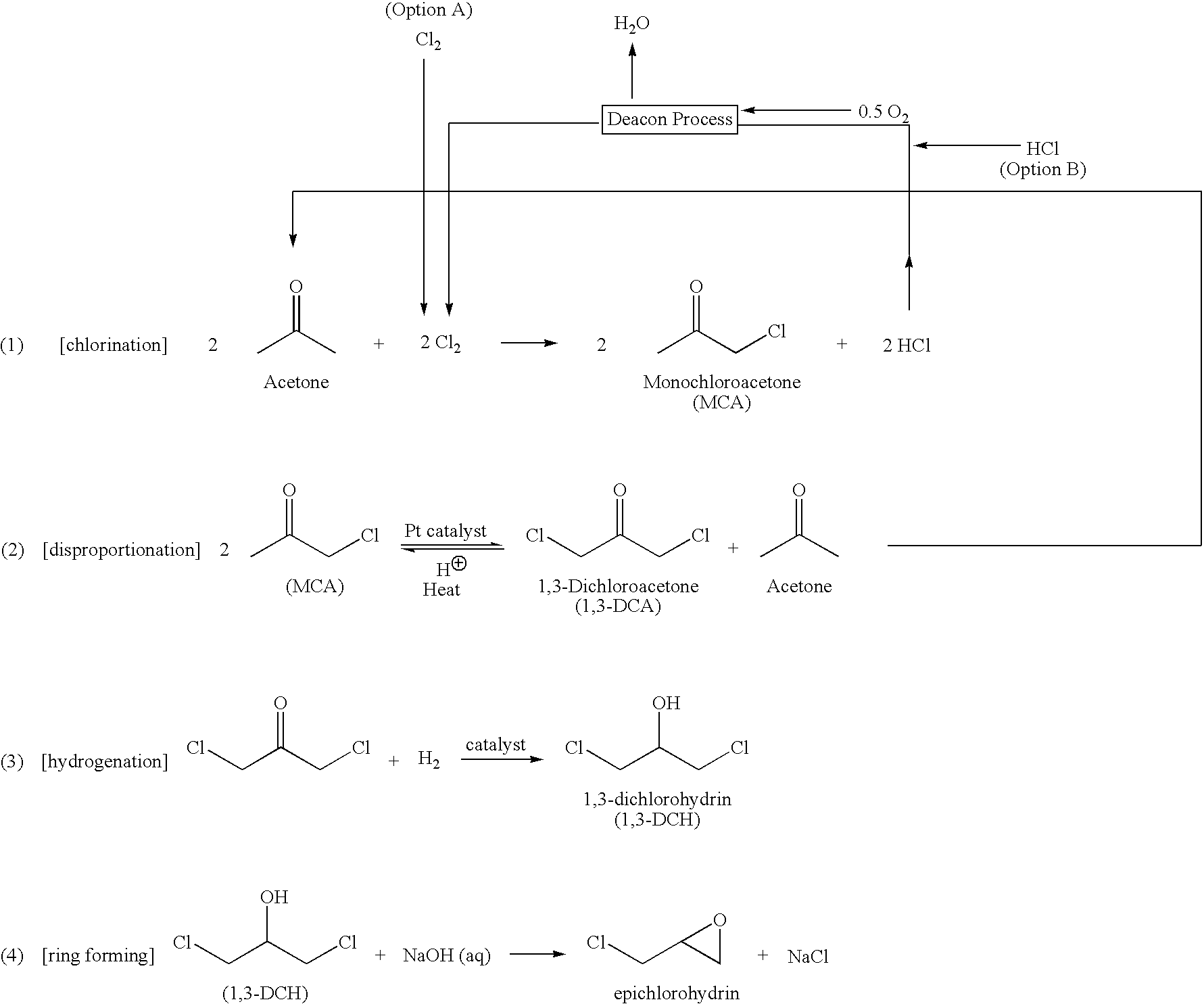Process for preparing 1,3-dichloroacetone
a technology of epichlorohydrin and acetone, which is applied in the preparation of carbonyl compounds, organic chemistry, chemistry apparatus and processes, etc., can solve the problems of adding significant complexity and high price of iodine to the building of a commercially viable process for a commodity-type produ
- Summary
- Abstract
- Description
- Claims
- Application Information
AI Technical Summary
Benefits of technology
Problems solved by technology
Method used
Image
Examples
examples 1 to 4
GC Conditions
[0032]GC: HP 5890 II with FID and 6890 auto-injectors (Front detector)[0033]Column: Rtx-35, Restek Corp., Cat # 10453, ser# 441628[0034]Column type: 35 percent diphenyl-65 percent dimethyl polysiloxane[0035]Column dimensions: 30 m×0.25 mm×1.0 um[0036]Head pressure: 25 psi[0037]Split vent flow: 50 mL / min[0038]Purge gas flow: 4 mL / min[0039]Air flow: ˜300 mL / min[0040]Hydrogen flow: 30 mL / min[0041]Make-up flow: 30 mL / min (column flow ˜4 mL / min)[0042]Temperature ramp: 55° C. for 4 min hold, +15° C. / min to 250° C. for 10 min.[0043]Run time: 27 minutes[0044]Injector volume: 0.5 uL (5 uL syringe)[0045]Injector temp: 200° C.[0046]Detector temp: 290° C.[0047]Solvent washes: A=acetonitrile, B=50 / 50 acetonitrile / water[0048]Integrator: HP ChemStation
[0049]The disproportionation reactor was a 4-dram vial equipped with a magnetic stir bar. Monochloroacetone was added to the reactor which contains water, a catalyst as shown in Table I and a strong acid and preferably a chloride salt. T...
PUM
| Property | Measurement | Unit |
|---|---|---|
| temperature | aaaaa | aaaaa |
| temperature | aaaaa | aaaaa |
| temperature | aaaaa | aaaaa |
Abstract
Description
Claims
Application Information
 Login to View More
Login to View More - R&D
- Intellectual Property
- Life Sciences
- Materials
- Tech Scout
- Unparalleled Data Quality
- Higher Quality Content
- 60% Fewer Hallucinations
Browse by: Latest US Patents, China's latest patents, Technical Efficacy Thesaurus, Application Domain, Technology Topic, Popular Technical Reports.
© 2025 PatSnap. All rights reserved.Legal|Privacy policy|Modern Slavery Act Transparency Statement|Sitemap|About US| Contact US: help@patsnap.com

